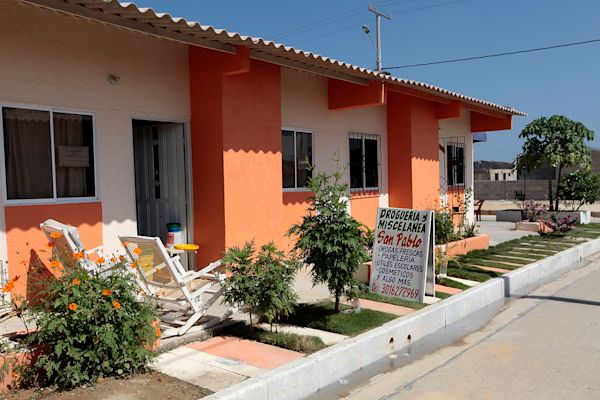Kiva Field Partners: More than just microfinance
February 24, 2011
Kiva’s mission, to connect people, through lending, for the sake of alleviating poverty, is implemented in the field by partnering with microfinance institutions around the world. All of Kiva’s Field Partners have a strong mission to alleviate poverty and expertise in doing so through the use of microcredit–they are the legs of Kiva that get the money loaned into the hands of the entrepreneurs. Yet, in many cases the projects and mission of our Field Partners expand beyond microfinance–they are dedicated to enriching the lives of their clients in many ways. A few examples from Kiva Field Partners across the world:
- The Christian Rural Aid Network (CRAN) runs the Child Education Support Scheme, a child aid and development program that provides access to quality, basic education for needy children living in deprived rural communities in Ghana. CRAN also runs a program called Energy in Common that provides lighting for remote villages in Ghana, using the concepts of microfinance: it loans the equipment to villagers, who then pay back in installments.
- Fundacion Paraguaya runs a self-sufficient agricultural highschool; they focus on producing and selling organic vegetables, but also have cows and a small dairy plant. The school also own a small hotel that is rented mainly for private functions, work meetings, and seminars. All students work and live on-campus: the freshmen do most of the basic work, the juniors train the freshman and also working on specialized tasks, while the seniors serve as experts and supervisors. Depending on what each student chooses they can graduate with a single or dual-degree in agriculture and/or hotel management.
- FINCA Peru provides its members with training sessions on women’s rights and gender issues education. FINCA is part of the Women’s Empowerment Mainstreaming and Networking network (WEMAN), which aims to empower and improve vulnerable women’s lives, their families, and communities. Training is offered during weekly or biweekly bank meetings through dynamic and interactive programs that incorporate analysis, reflection and mutual learning to allow women to share their own experiences and change their attitudes and perceptions.
Here in Colombia Fundación Mario Santo Domingo’s (FMSD) work is focused not solely on microfinance, but the social development of Colombia as whole, as described by their mission statement:
To promote the common good and bring about social development on a national level through support for educational, cultural, charitable and health-related activities and programs, scientific and technological research, the creation of jobs and income, and all other activities that contribute to improving the quality of life of the general population, especially within the poorest communities.
FMSD has built a clinic, a ecological institute on Barú Island, and high schools for communities that likely would not have received any other form of help. The hold numerous workshops each week ranging for business seminars to programs designed to improve the communication of families within their homes. They have programs that offer street children better opportunities for their future, as well as programs designed to strengthen and maintain Colombian culture, such the events and costumes used as part of Barranquilla’s world famous carnival that will take place in 9 days.
One of FMSD’s largest and most ambitious projects is called Dreams and Opportunities, which is a program designed to construct strong communities with better housing options for poor families in Colombia. They have constructed over 14000 homes to daye, and in 2008 plans began for two large communities on the northern coast: Villas de San Pablo in Barranquilla and Ciudad del Bicentenario in Cartagena will housing 20,000 and 25,000 families respectively within the next decade. The homes receive approximately a 40% subsidy from the local and national government and require only 10% down for a family to move in; they are able to take out a 7-10 year loan at low interest rate that they would never be able to receive from a commercial lending source. FMSD does not only focus on building homes, but also a community surrounding them–playgrounds, parks, computer centers, and community areas are planned into the design from the beginning.
Last Friday I had to opportunity to visit Villas de San Pablo for the dedication of a free house from FMSD for a family in need. The Alverez family used to live in very poor conditions and experienced a tragedy where they lost 4 of their 8 children in a fire in their previous home. FMSD worked with the national government and local Catholic church to provide a new, furnished home for the family. The family will now have an opportunity to start over in a new, safer home thanks in part to FMSD.

Belarmino "Oscar" Alvarez meets with Beatriz Uribe, Minister of Housing and Environment (equivalent to the Secretary of Housing and Urban Development in the US government) during the presentation of their new home.
Projects such as Villas de San Pablo allow organizations like FMSD to assist people in many aspects of their lives, as well as tie back to their microfinance mission; loan officers are constantly reaching out to new residents to see if they would benefit from a loan to start or improve their current business.
Kiva’s Field Partners are doing much more than just providing loans, they are helping transform their communities and change people’s lives.
Interested in learning more about Fundación Mario Santo Domingo? Visit their page on Kiva here!
John Gwillim is a Kiva Fellow currently serving with Fundación Mario Santo Domingo (FMSD) in Barranquilla, Colombia.
PREVIOUS ARTICLE
Participating in the Dialogue: The Role of Microfinance Critics (Part 2) →NEXT ARTICLE
Team Obama Reaches $1 million in Loans! →















